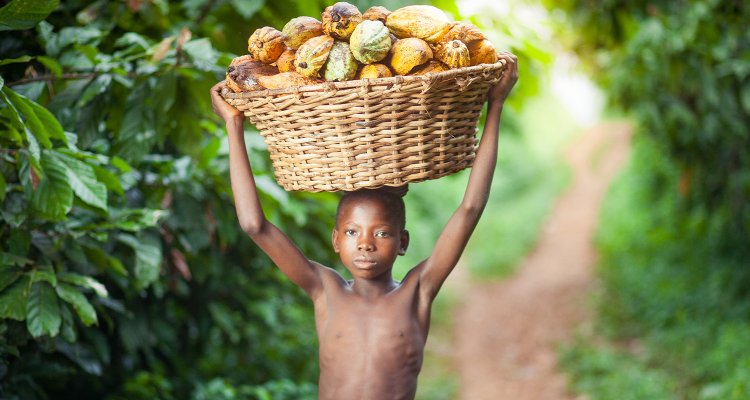
‘We have to stop our race to the bottom’
Just as with other everyday products like coffee, sugar, and fruit, the production of cocoa involves the risk of people being exploited. Are there instruments that companies and governments can use to map and reduce the risk of abuses in production and food chains?
Bonuses
There most certainly are, says Birgit de Vos, Senior Researcher in Human Rights in Agri-food Chains. She mentions the example of Nestlé. This multinational uses a framework created by the Danish Institute for Human Rights, and recently announced its intention to pay households a cash transfer, which is an allowance irrespective of the volume they sell. Households receive this cash transfer if they combine cocoa with multiple other crops, or with livestock. They also receive an additional amount for pruning their cocoa trees, planting new non-cocoa trees, and sending their children to school.

Risk analysis
Together with her fellow researchers from Wageningen Economic Research, De Vos developed not only a framework but also a tool to map the risks of abuses: the Humanity Views.
‘The Humanity Views is an interactive map of the world, in which users can click on countries and products, and see on a scale of zero to five what the risks are of eight types of human rights violations. We also differentiate between different regions. If a company knows what risks are particularly high in certain regions, they can set up specific programmes to reduce these risks. This tool makes it easier to set priorities and make a real impact, already covering as it does fifty sectors, including palm oil, soy, coffee, cocoa, and meat.’
Symbolic gestures
De Vos sees it as a positive development that companies are prepared to pay farmers a higher price and work with favourable contract conditions. At the same, she also warns that for many companies, these are merely symbol gestures. ‘Companies join a round table or covenant and run a few pilot projects, the impact of which is often unproven or controversial. Also, they often only have firm targets for their direct suppliers, whereas it is essential to include indirect suppliers as well, as these are often the poorest and most vulnerable, such as small-scale farmers and workers in the fields. Reducing the risk of modern slavery throughout the chain starts with mapping all suppliers, including subcontractors.’
Child labour
One of the risks of cocoa farming is child labour. And yet, De Vos is not in favour of simply forbidding child labour in cocoa-producing countries. ‘If you don’t address the underlying causes, this will only be counterproductive. Child labour will continue, but out of sight, or the problem will shift to another sector, such as mining. There is a reason for child labour, and that reason is not – as is sometimes claimed in a cheap attempt to blame the victim – local culture, but poverty. Another factor is armed conflicts. The latter is not so easy to solve, but where poverty is concerned, it basically boils down to our collective willingness to stop the race to the bottom, and really do something about exploiting small farmers, and keeping them small and dependent. If we really want to change things, this is the question we should be asking ourselves.’